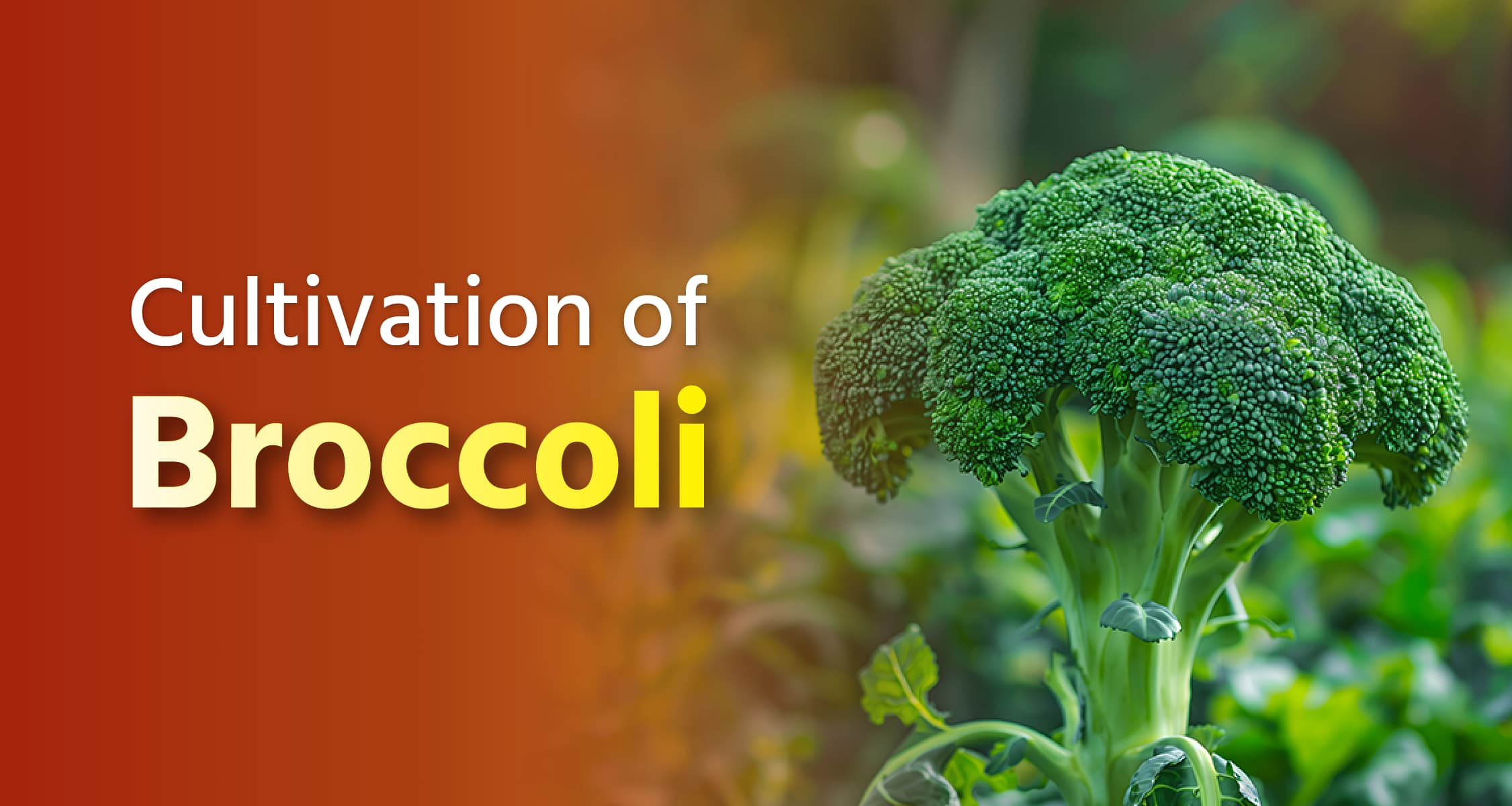Cultivation of Broccoli

Broccoli is one of the vegetables from the cabbage family. Its plant and flowers resemble cauliflower. The flowers come in green, yellow, and purple colors, with green broccoli being the most popular. It contains essential nutrients like Vitamin C, Vitamin K, calcium, iron, and antioxidants, which help strengthen the body's immune system. Broccoli cultivation is gaining popularity in India, with Maharashtra, Karnataka, Tamil Nadu, and Himachal Pradesh being the major growing states. Additionally, it is also cultivated in Uttar Pradesh, Punjab, Haryana, and Rajasthan. You can find some important information related to its cultivation through this post.
How to Cultivate Broccoli
Optimal Time for Broccoli Cultivation
- The best time to cultivate broccoli is during the autumn and winter seasons. In northern India, the ideal sowing time is between September and October. In southern India, it can be done between November and January. For seed germination and proper plant development, a temperature range of 15 to 25°C is ideal.
Suitable Climate
- Broccoli requires a cool and moist climate for optimal growth. Extreme heat or cold can damage the broccoli crop. High temperatures can affect plant development and cause the leaves to turn yellow. The daytime temperature should be between 20-25°C, and the nighttime temperature should be between 15-18°C.
Suitable Soil
- Well-drained loamy or sandy loam soil is best suited for broccoli cultivation. The soil pH should be between 6.0 and 7.5. The soil should be rich in organic matter to provide essential nutrients for healthy plant growth. In light-textured soil, incorporating organic manure can improve its suitability for broccoli cultivation.
Seed Quantity
- For cultivating broccoli on one acre of land, 200 to 300 grams of seeds are needed. The seeds are initially prepared in a nursery and then transplanted to the field. In the nursery, seeds are sown at a depth of approximately 1 to 1.5 centimeters.
Field Preparation and Fertilizer Management
- To prepare the field, start with deep plowing using a moldboard plow. After that, use a cultivator or a local plow to perform 2-3 light plowings to make the soil loose and level. After each plowing, irrigate lightly to maintain the moisture balance in the soil. Ensure proper drainage in the field to prevent waterlogging. During the final plowing, mix organic manure or well-rotted cow dung. Additionally, add 20 kg of nitrogen, 40 kg of phosphorus, and 20 kg of potash per acre of land. Prepare beds in the field for transplanting the plants.
Transplanting
- Transplant the seedlings into the main field about 25-30 days after sowing the seeds. Transplant the plants in rows, maintaining a distance of 24 inches between rows and 17 inches between plants. The best time for transplanting is in the evening. Remove and discard any diseased or weak plants, and select healthy plants for transplanting.
Irrigation Management
- The frequency of irrigation for broccoli depends on the moisture content of the soil. After transplanting the seedlings, provide light irrigation. Regular irrigation is necessary during the early growth stages of the plants, generally every 8 to 10 days. Stop irrigation about 2 weeks before harvest to control moisture content in the plants and improve crop quality. Avoid waterlogging in the field during irrigation to protect plants from several harmful diseases.
Weed Control
- Weeds can be harmful to broccoli crops as they absorb essential nutrients needed by the plants. Regular weeding and hoeing can help control weeds. Mulching around the plants can also prevent weed growth. In organic farming, you can use organic herbicides. If the weed problem increases, you may use chemical herbicides as well.
Disease and Pest Control
- Broccoli crops can be affected by several diseases and pests, including Alternaria blight, clubroot, aphids, and diamondback moths. Regularly inspect the crops to prevent and manage these issues early. Use chemical fungicides and insecticides as needed, ensuring you follow the recommended dosage to avoid plant damage.
Harvesting
- Harvest broccoli when the florets are fully developed. The time required for the crop to mature depends on the variety and climate. Generally, broccoli is harvested 60-70 days after transplanting. Cut the florets from the plants at harvest time. The yield is about 5 to 6 tons of broccoli per acre. You can get a second crop, but note that the second flush of florets will be smaller in size.
What other crops do you grow along with broccoli? Share your answers and experiences with us through comments. For more information on agriculture, follow the 'Krishi Gyan' channel now. Also, don't forget to like and share this post.
Frequently Asked Questions (FAQs)
Q: When and how should broccoli be planted?
A: Broccoli is a cool-season crop that can be planted in India during the months of October to December. It is best to start seeds indoors 6-8 weeks before the last frost date, and then transplant them outdoors when the soil temperature reaches about 10°C. Broccoli prefers well-drained, fertile soil with a pH between 6.0 and 7.0, and it requires consistent moisture to grow well.
Q: How long does it take to grow broccoli?
A: After sowing seeds in the nursery, it takes about 30 days for the seedlings to be ready. The plants are usually ready for harvest 60-70 days after transplanting them into the main field.
Q: Where is broccoli grown in India?
A: Broccoli is commercially cultivated in Tamil Nadu, Gujarat, Maharashtra, Karnataka, Himachal Pradesh, Uttar Pradesh, Punjab, Haryana, and Rajasthan in India.
जारी रखने के लिए कृपया लॉगिन करें

फसल चिकित्सक से मुफ़्त सलाह पाएँ
